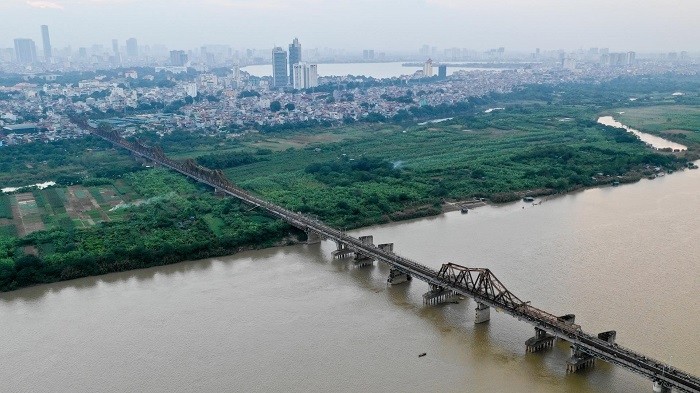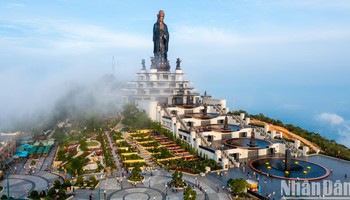In addition to the current six bridges spanning the Red River, the capital city has more new bridges planned for the next few years, including Tran Hung Dao Bridge and Tu Lien Bridge, to realise its socio-economic development goals.
 |
Nhat Tan Bridge has a total length of 9.17 km, with the main part stretching 3.9 km and the leading road 5.27 km.
 |
The bridge connects the suburban district of Dong Anh with inner Tay Ho District. Construction commenced in March 2009 and was completed nearly six years later in January 2015.
 |
Built from 1898-1902, during French colonial rule, Long Bien Bridge is the first steel bridge in Hanoi to span the Red River. Nowadays, it mainly serves motorcycles, bicycles and pedestrians.
 |
Chuong Duong Bridge was put into use in 1985-1986, becoming an important and effective route in the capital city.
 |
The bridge is a part of the National Highway No. 1A. At 1,230m long, it consists of 21 spans, divided into four lanes running in two directions, with each being 5m wide.
 |
Chuong Duong is the first large bridge built totally by Vietnamese engineers, without foreign technical assistance in design nor construction.
 |
Thanh Tri Bridge was inaugurated and opened to traffic in February 2007. It is the largest among Hanoi’s bridges spanning the Red River. The bridge starts at the intersection of National Highway 1A in Phap Van, Thanh Tri District, and ends at National Highway No. 5 in Sai Dong, Gia Lam District.
 |
The main part of Thanh Tri Bridge is 3,084m long, while its total length measures more than 12,000 m, with six lanes, allowing vehicles to travel at a maximum speed of 80 km/h.
 |
Vinh Tuy Bridge opened to traffic on September 25, 2009, after four years of construction. The bridge starts from the Tran Quang Khai - Nguyen Khoai - Minh Khai intersection and ends at the Long Bien - Thach Ban intersection.
 |
The main part of the bridge spanning the Red River is 955m long. It was constructed using cantilever technology and set a record for Vietnam's largest cantilever span.
 |
Thang Long Bridge connects Noi Bai International Airport with the capital city. Construction began in 1974 and it was inaugurated in 1985, the longest construction period for any bridge in Hanoi.
 |
The two-storey steel truss bridge is 3,250m long, featuring 25 spans of the main bridge section and 46 additional spans for railroad and rudimentary vehicles.
 |
The middle of the first floor is the 11m wide railway, for the Van Dien - Bac Hong rail route, in addition to two lanes for motorbikes and bicycles. The second floor is for trucks with a width of 21 m. This concrete surface also has two lanes for pedestrians.
 |
The projected Tran Hung Dao Bridge aims to connect the inner districts with the eastern part of the capital city, while reducing the pressure on Long Bien Bridge and Chuong Duong Bridge.
 |
Tran Hung Dao Bridge has a projected length of about 5.5km. Its starting point is at the Tran Hung Dao - Le Thanh Tong - Tran Thanh Tong - Han Thuyen - Tang Bat Ho intersection (in the districts of Hoan Kiem and Hai Ba Trung). After crossing Nguyen Van Linh Street (National Highway 5), the bridge will be connected to planning roads in Viet Hung Ward, Long Bien District.














![[In Pictures] Elephant-friendly tourism in Dak Lak](https://image-en.nhandan.vn/350x200/Uploaded/2024/eclyestesfj/2024_03_14/v1-6591.jpg)

![[In Pictures] Panorama depicting historic Dien Bien Phu Victory brings emotions to veterans and tourists](https://image-en.nhandan.vn/350x200/Uploaded/2024/bpcgtqvp/2024_03_13/ndo-br-10-6617-792.jpg)